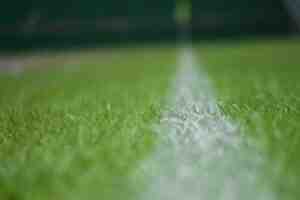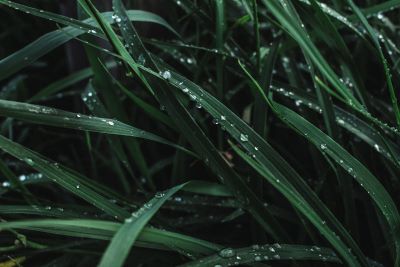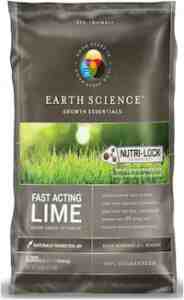Maintaining a healthy and lush lawn is a point of pride for many homeowners. They want their lawns to look beautiful, green, and inviting. However, achieving a healthy lawn requires a lot of work and careful consideration. One important factor that can significantly impact the health of your lawn is the pH level of the soil. When the soil pH level is too high or too low, it can result in poor growth and the development of weeds and pests.
One common solution to address soil pH imbalance is the application of lime. Lime is a soil amendment that can help to neutralize acidic soils, making it easier for grass and other plants to absorb the nutrients they need. But, is lime worth the cost for your lawn? In this article, we will explore the benefits of using lime on your lawn and help you decide if it is worth the investment.
Is Lime Worth the Cost for Your Lawn?
The benefits of using lime on your lawn are clear, but is it worth the cost? Yes, if your goal is a lush, beautiful lawn then lime is worth the cost. Also, if your soil is significantly acidic and your grass is struggling to grow, then lime may be a worthwhile investment. However, if your soil pH level is already in the optimal range, then there may be no need to apply lime.
It is also essential to consider the type of grass you have. Some grasses, such as Centipede and St. Augustine, prefer slightly acidic soil and may not benefit from lime application. Ultimately, whether or not lime is worth the cost for your lawn depends on your specific circumstances.

Understanding Soil pH Levels
Before we dive into the benefits of using lime, it is essential to understand soil pH levels. Soil pH measures the acidity or alkalinity of the soil on a scale of 0 to 14, with 7 being neutral. A pH level below 7 indicates acidic soil, while a pH level above 7 indicates alkaline soil. Most grass types grow best in soil with a pH level between 6 and 7.
When the soil pH level is too low (acidic), nutrients such as nitrogen, phosphorus, and potassium become less available to plants. This results in stunted growth, yellowing leaves, and an overall weakened lawn. On the other hand, if the soil pH level is too high (alkaline), it can lead to the buildup of salts, which can harm plant roots and cause nutrient deficiencies.
Benefits of Lime for Your Lawn
Now that we have a basic understanding of soil pH levels, let’s explore the benefits of using lime on your lawn.
- Neutralizes Soil Acidity: As we mentioned earlier, lime can help to neutralize acidic soils, making it easier for grass and other plants to absorb the nutrients they need. This can result in healthier and stronger plant growth.
- Improves Fertilizer Efficiency: When the soil pH level is too low, fertilizers become less effective, and nutrients can leach away. Lime can help to balance the soil pH level, making it easier for plants to absorb nutrients from fertilizer.
- Reduces Soil Toxicity: Acidic soils can sometimes contain toxic levels of aluminum and manganese, which can be harmful to plant growth. Applying lime can help to reduce the toxicity of these elements, making it easier for plants to grow and thrive.
- Prevents Moss Growth: Moss thrives in acidic soil conditions. By raising the soil pH level with lime, you can help to prevent moss from growing in your lawn.
- Enhances Microbial Activity: Lime can enhance microbial activity in the soil, which can help to break down organic matter and release nutrients for plant growth.

How Often to Apply Lime to Your Lawn
The frequency of lime application depends on the current pH of your soil and the desired pH level. In general, it is recommended to apply lime every 2-3 years. However, if your soil is highly acidic, you may need to apply lime more frequently.
Best Time to Apply Lime to Your Lawn
The best time to apply lime is in the fall or spring, when the soil is not too wet or too dry. Avoid applying lime during hot, dry periods or during the summer months when grass is actively growing.
What is the Cost of Adding Lime?
- Expense
The biggest drawback of liming is its cost. Applying lime can be expensive, especially for larger lawns. The cost of liming will vary depending on the size of your lawn, the pH level of your soil, and the type of lime used.
- Time and Effort
Liming is not a one-time solution. To maintain optimal soil pH levels, you may need to lime your lawn every one to three years. This can be time-consuming and labor-intensive, especially for larger lawns.
- Potential Negative Effects
While liming can be beneficial, it’s important to note that over-liming can have negative effects on your lawn. Over-liming can lead to alkaline soil conditions, which can cause nutrient imbalances and other issues. It’s important to test your soil pH levels regularly and lime only as needed.
Basic cost of Lime for Your Soil pH Level and cost per
| Soil pH Level | Amount of Lime to Apply (per 100 sq. ft.) | Cost of Lime (per 50 lb. bag) |
|---|---|---|
| Below 5.5 | 5-7 lbs. | $30-$70 |
| 5.5-6.0 | 4-5 lbs. | $30-$70 |
| 6.0-6.5 | 2-3 lbs. | $30-$70 |
| 6.5-7.0 | 1-2 lbs. | $30-$70 |
| Above 7.0 | Not recommended | N/A |
It’s important to note that these are general guidelines, and the actual amount of lime you’ll need may vary based on the specific conditions of your lawn. Additionally, the cost of lime may vary based on your location and the type of lime used. It’s always a good idea to consult with a lawn care professional or conduct a soil test before applying lime to your lawn.
What is the Average Cost of Lime?
The average cost for a bag of lime can vary based on several factors such as the location, type of lime, and quantity. Typically, a 50-pound bag of lime can cost anywhere from $30 to $70. However, the price may be higher or lower depending on the location and availability of lime. It’s always a good idea to check with local lawn care or garden supply stores to get an accurate price for lime in your area.

FAQs
Q: How do I know if my lawn needs liming?
A: The best way to determine if your lawn needs liming is to test your soil pH levels. Soil testing kits are available at most garden centers and can provide an accurate measurement of your soil’s pH levels. Generally, a pH level of 6.0 to 7.0 is optimal for most lawn grasses.
Q: How much lime should I apply to my lawn?
A: The amount of lime you should apply will depend on the pH level of your soil and the type of lime used. It’s important to follow the instructions on the lime package and not to over-apply. Generally, one to two pounds of lime per 100 square feet of lawn is sufficient.
Q: Is there a best time of year to lime my lawn?
A: The best time to lime your lawn is in the fall or early spring, when soil moisture levels are high and grass growth.
Q: Can I apply too much lime to my lawn?
A: Yes, applying too much lime to your lawn can have negative effects. Over-liming can cause soil pH levels to become too high, which can lead to nutrient imbalances and other issues. It’s important to follow the recommended guidelines for lime application and conduct a soil test to determine how much lime your lawn actually needs.
Q: Is it safe to apply lime to my lawn myself, or should I hire a professional?
A: It’s generally safe to apply lime to your lawn yourself, but it’s important to take proper safety precautions. Lime can be irritating to the skin and eyes, so it’s recommended that you wear gloves, safety glasses, and a dust mask when handling it. If you’re unsure about how to properly apply lime to your lawn or are concerned about safety, it’s always a good idea to consult with a lawn care professional.
Q: How long does it take for lime to work on my lawn?
A: The amount of time it takes for lime to work on your lawn can vary based on a number of factors, such as soil pH levels, weather conditions, and the type of lime used. Generally, you can expect to see results within a few months of applying lime, but it may take longer for the full effects to be realized. It’s important to be patient and continue to monitor the health of your lawn after applying lime.


